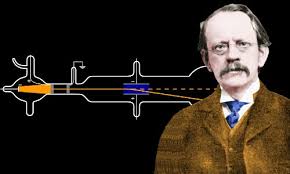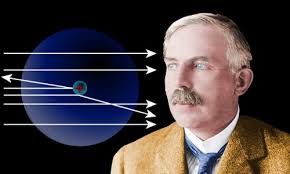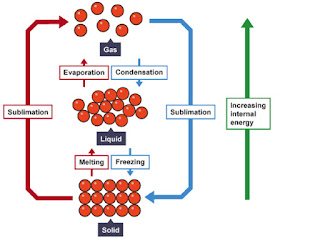My Homeworks
Sunday, July 1, 2018
Thursday, June 7, 2018
Study Guide
Please print and fill out this study guide in order to be ready.
Physical Science Study Guide 2018 by Divanny Correa on Scribd
Tuesday, May 29, 2018
Atomic Models
Do a research and explain what was the idea of the atom the following people had. Draw a picture of each model and write a brief description on this matter. If you need help do not hesitate writing a comment.
At the end of this post you will find a YouTube video explaining this topic.
Democritus

John Dalton

Joseph J. Thomson

Ernest Rutherford

Niels Böhr

At the end of this post you will find a YouTube video explaining this topic.
Democritus

John Dalton

Joseph J. Thomson
Ernest Rutherford
Niels Böhr

Thursday, May 17, 2018
Buoyant Force and Density Homework
Archimedes Principle Worksheet
Watch the video then read the following article and examine the examples and then answer the questions below.
A block of gold and a block of wood both have the same volume. If they are both submerged in water, which has the higher buoyant force?
2. A 100-cm3 block of lead that weighs 11 N is carefully submerged in water. One cm3 of water weighs 0.0098 N.
a. What volume of water does the lead displace?
b. How much does that volume of water weigh?
c. What is the buoyant force on the lead?
d. Will the lead block sink or float in the water?
3. The same 100-cm3 lead block is carefully submerged in a container of mercury. One cm3 of mercury weighs 0.13 N.
a. What volume of mercury is displaced?
b. How much does that volume of mercury weigh?
c. What is the buoyant force on the lead?
d. Will the lead block sink or float in the mercury?
4. According to problems 2 and 3, does an object’s density have anything to do with whether or not it will float in a particular liquid? Justify your answer.
5. Based on the table of densities, explain whether the object would float or sink in the following situations:
material density (g/ cm3)
gasoline 0.7
gold 19.3
lead 11.3
mercury 13.6
molasses 1.37
Paraffin(wax) 0.87
platinum 21.4
a. A block of solid paraffin (wax) in molasses. Answer - floats
b. A bar of gold in mercury. Answer - sink
c. A piece of platinum in gasoline. Answer - sinks
d. A block of paraffin in gasoline. Answer -sink
Scroll down to find the materials that you have to bring for our experiment.
Watch the video then read the following article and examine the examples and then answer the questions below.
4 2 Arch Prin Ws Answers-1-1 by Divanny Correa on Scribd
A block of gold and a block of wood both have the same volume. If they are both submerged in water, which has the higher buoyant force?
2. A 100-cm3 block of lead that weighs 11 N is carefully submerged in water. One cm3 of water weighs 0.0098 N.
a. What volume of water does the lead displace?
b. How much does that volume of water weigh?
c. What is the buoyant force on the lead?
d. Will the lead block sink or float in the water?
3. The same 100-cm3 lead block is carefully submerged in a container of mercury. One cm3 of mercury weighs 0.13 N.
a. What volume of mercury is displaced?
b. How much does that volume of mercury weigh?
c. What is the buoyant force on the lead?
d. Will the lead block sink or float in the mercury?
4. According to problems 2 and 3, does an object’s density have anything to do with whether or not it will float in a particular liquid? Justify your answer.
5. Based on the table of densities, explain whether the object would float or sink in the following situations:
material density (g/ cm3)
gasoline 0.7
gold 19.3
lead 11.3
mercury 13.6
molasses 1.37
Paraffin(wax) 0.87
platinum 21.4
a. A block of solid paraffin (wax) in molasses. Answer - floats
b. A bar of gold in mercury. Answer - sink
c. A piece of platinum in gasoline. Answer - sinks
d. A block of paraffin in gasoline. Answer -sink
Wednesday, May 16, 2018
Density Experiment
Rainbow in a Jar
Items Needed (Only one set per team, 3-people team)
- 1/4 cup Honey
- 1/4 cup Blue Dish Soap
- 1/4 cup Water
- 1/4 cup Corn Syrup
- 1/4 cup Olive Oil
- 1/4 cup Rubbing Alcohol
- Beeds
- Bolt
- Corn Kernell
- a tiny dice
- a dry bean
Instructions
- Add one drop of red food coloring and one drop of blue food coloring to 1/4 cup of honey and stir until combined. This is create a purple color liquid. Pour the purple liquid carefully into the tall jar.
- Next add about 1/4 cup of blue dish soap to the tall jar.
- Then add a few drops of green food coloring to 1/4 cup of water and mix until combined. Then carefully pour the green liquid into the tall jar. Tip: When pouring in the green liquid, tilt the jar so the liquid runs down the side of the jar slowly.
- Wait a few moments and then slowly pour 1/4 cup of olive oil into the jar. Tip: Again, be very careful when pouring in the liquid. Make sure to tilt the jar and pour very slowly so the colors don’t mix.
- Add a few drops of red food coloring to 1/4 cup of rubbing alcohol and mix until combined. Then carefully pour the red liquid into the tall jar. Tip: I can’t stress enough how important it is to tilt the jar and pour slow. Otherwise the colors will mix together and you won’t get a distinct rainbow.
Tuesday, May 15, 2018
Changes of State
Review the information presented in class today and complete the worksheet below:
Fill in the phase changes in the blank provided.
Phase Change Worksheet
The graph was drawn from data collected as a substance was heated at a constant rate. Use the graph to answer the following questions.At point A, the beginning of observations, the substance exists in a solid state. Material in this phase has _______________ volume and _____________ shape. With each passing minute, _____________ is added to the substance. This causes the molecules of the substance to ____________ more rapidly which we detect by a ________________ rise in the substance. At point B, the temperature of the substance is ______°C. The solid begins to __________. At point C, the substance is completely ____________ or in a ___________ state. Material in this phase has _______________ volume and _____________ shape. The energy put to the substance between minutes 5 and 9 was used to convert the substance from a ___________ to a ___________. This heat energy is called the latent heat of fusion.Between 9 and 13 minutes, the added energy increases the ______________ of the substance. During the time frompoint D to point E, the liquid is ___________. By point E, the substance is completely in the __________ phase. Material in this phase has _____________ volume and ___________ shape. The energy put to the substance between minutes 13 and 18 converted the substance from a ___________ to a ___________ state. This heat energy is called the latent heat of vaporization. Beyond point E, the substance is still in the ______________ phase, but the molecules are moving _______________ as indicated by the increasing temperature.
Which of these three substances was likely used in this phase change experiment?
Substance
|
Melting point
|
Boiling point
|
Bolognium
|
20 °C
|
100 °C
|
Unobtainium
|
40 °C
|
140 °C
|
Foosium
|
70 °C
|
140 °C
|
Wednesday, May 2, 2018
Subscribe to:
Comments (Atom)
-
Homework Due May 2nd, 2017 Answer the following questions 1)What equation would you use to find the volume of a rectangular box? ...
-
Welcome to our Homeworks Website! You are required to visit this website everyday in order to figure out the asignments you may have. ...









